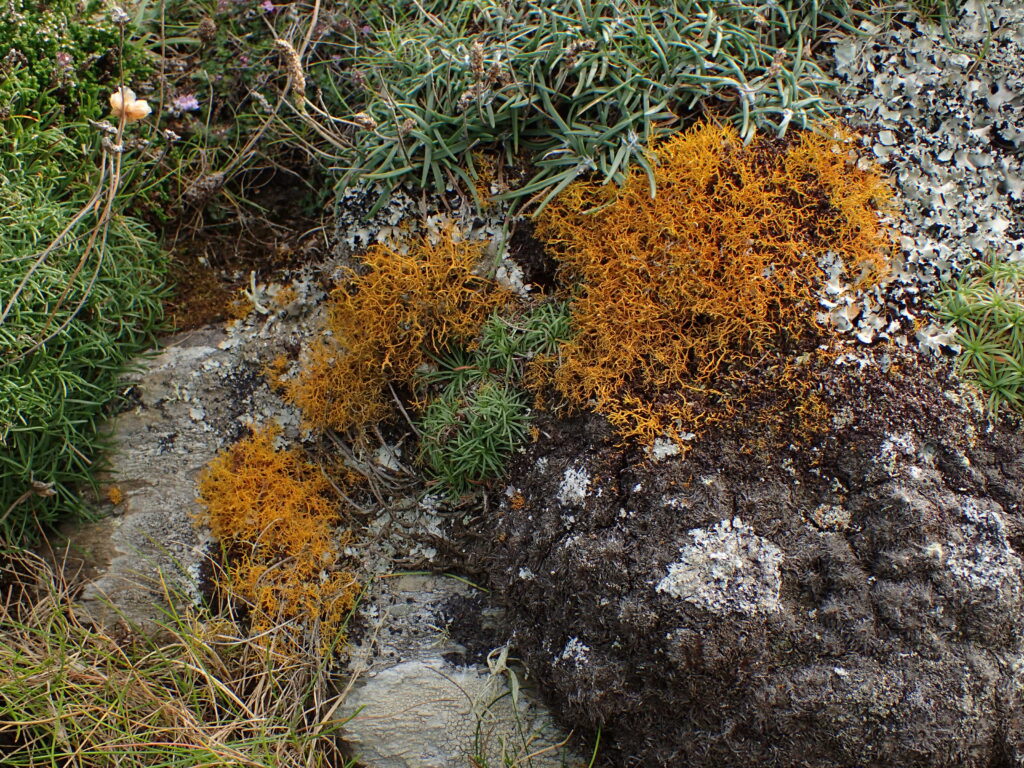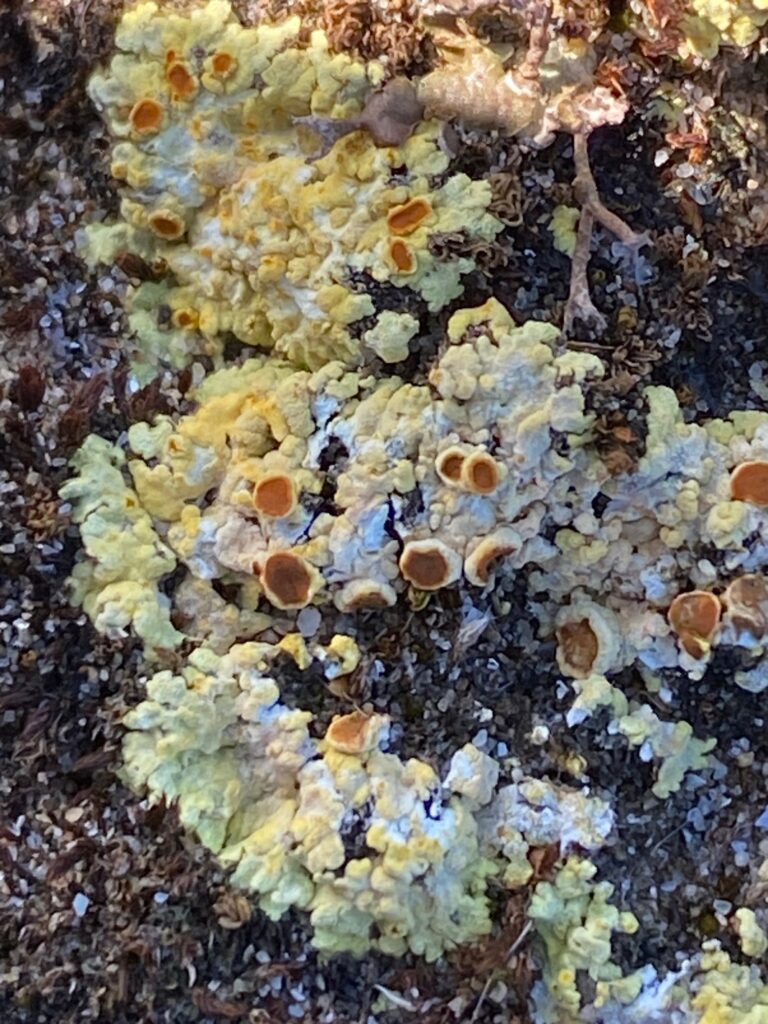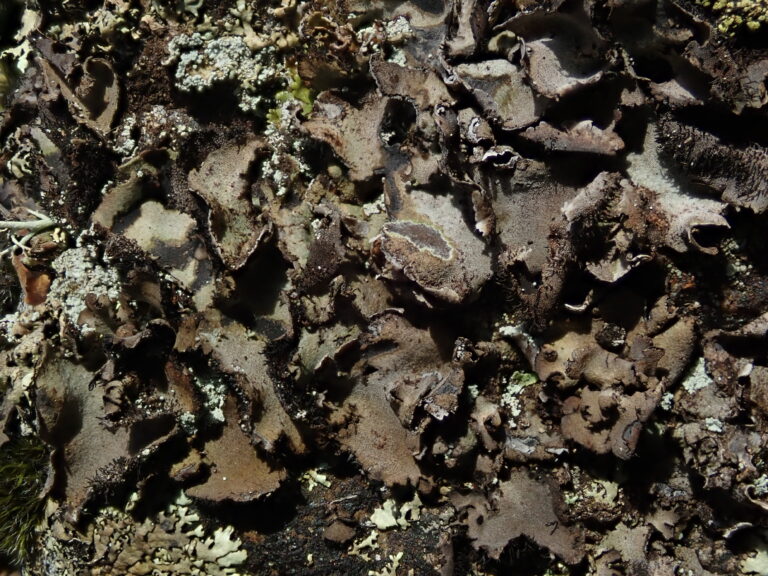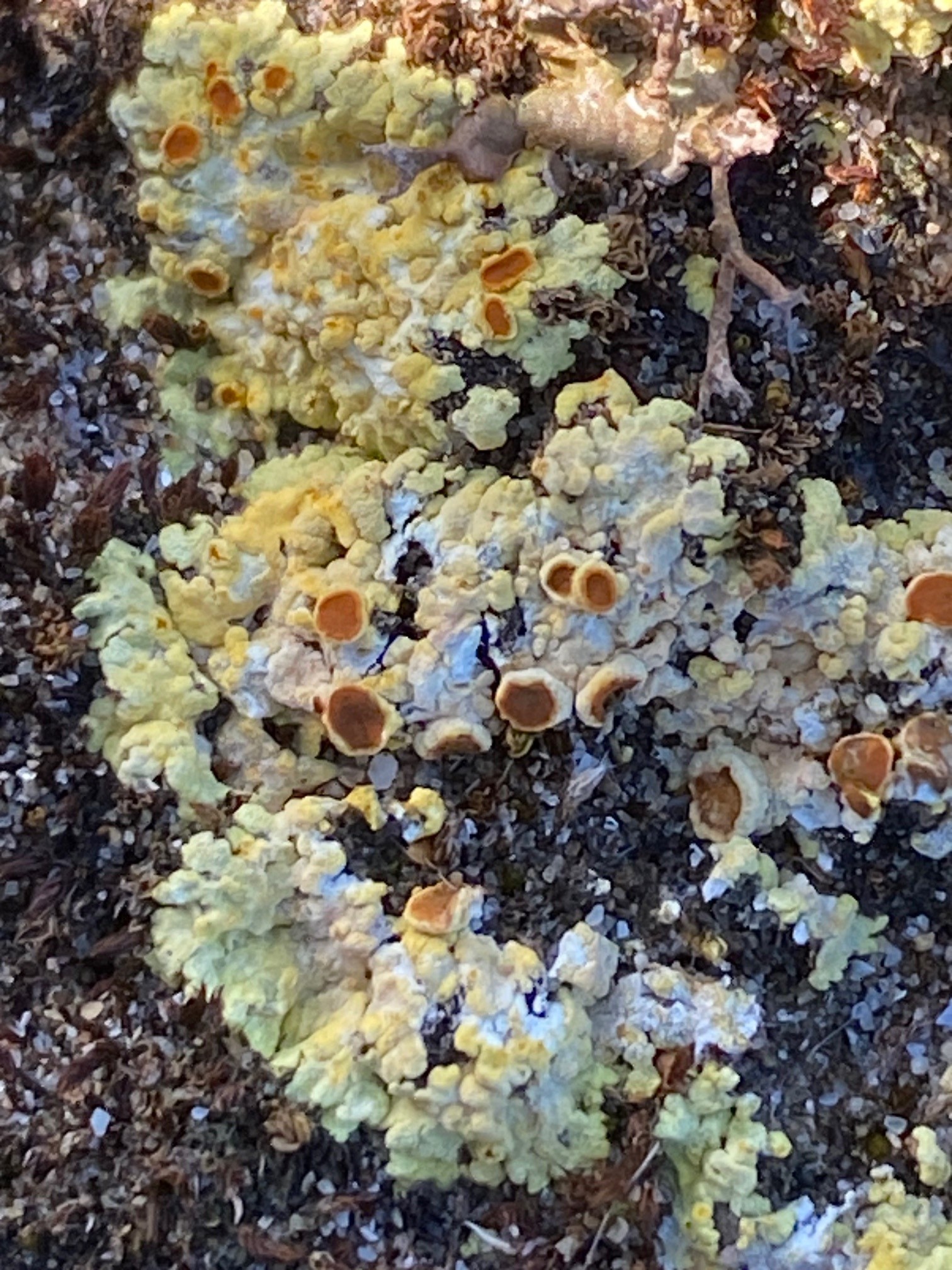Lichens are unique, complex organisms made up of a fungi and an algae. This partnership allows them to live in harsh environments where neither organism could survive alone.
The fungus is the largest part of a lichen. It absorbs nutrients and water, anchors the lichen in place and protects the tiny algae. The algae produces sugars through photosynthesis, which is why lichens generally prefer sunny positions.
Lichens come in various forms, including crustose (crust-like), foliose (leaf-like), and fruticose (shrub-like). Each one has adapted to different conditions. There are also different communities of lichens. For example, parmelion lichens typically grow on trees with very acidic bark, terricolous communities grow largely on soil and saxicolous lichens grow on rocks.
While lichens can survive in harsh conditions they generally all need clean air. Because they absorb nutrients and water directly from the air, they’re sensitive to pollutants and are an indicator of good air quality. Lichens are also critical in breaking down rocks and forming soils. They provide a microhabitat for small invertebrates and can be a source of food for wildlife, especially in the winter when little else is available.
Ten Focus Groups have been identified which bring together Devon Species of Conservation Concern lichens with similar requirements. These are discussed below. There is also a detailed overview paper for each group in Find out more below. A number of Focus Species still need to be identified through discussion with the lichen experts.




